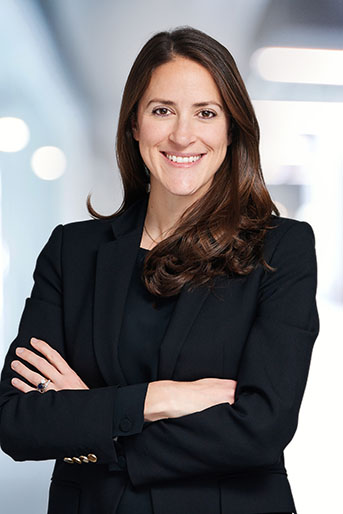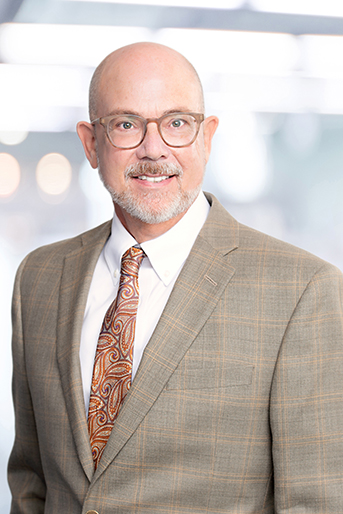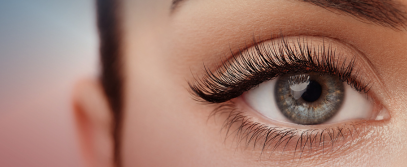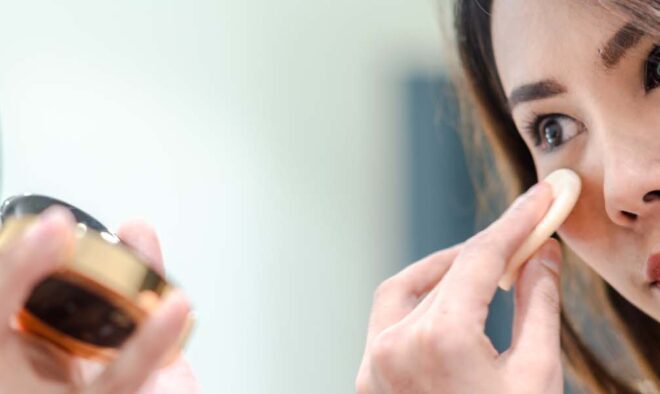Shifting Dynamics and Priorities in Cosmetics and Skin Care

Hilco Global’s Kirstin DiCecca and Gary Dressler focus in on the evolution and outlook for two of the Beauty Industry’s highest growth categories: Cosmetics and Skin Care.
Steve Katz:
Hi, everybody, and thanks for taking time out of your busy schedule to join us on this latest installment of the Hilco Global Smarter Perspective podcast series. As return listeners know, by now, I’m your host, Steve Katz. And if this is your first time listening, welcome. We’re really glad that you could tune in.
Steve Katz:
I’ve been looking forward to today’s discussion, because we have not one but two, yes, two guests, and they both have a great but distinct take on our topic, which today is focused on the health and beauty industry, what’s been happening there over the past year or so, and what we’re likely to see in the year ahead. So we have Gary Dressler, who’s Senior Evaluation Director from Hilco Valuation Services, and he has extensive experience across manufacturing, wholesaling, and e-commerce. And then we have Kirstin DiCecca, VP of Operations for Hilco Streambank, where she focuses largely on efforts pertaining to intangible assets such as patents and intellectual property. So with that said, welcome to you both.
Kirstin DiCecca:
Great to be here, Steven.
Gary Dressler:
Thanks for having me on.
Steve Katz:
We’re really excited to have you both with us. And with health and beauty being such a broad industry, I’d like to focus our topic today in on two key categories, so I guess cosmetics in skincare would be the natural place to start. So Gary, maybe you could talk a little bit about the shift that we’ve seen in recent years where market share and these two categories is being captured away from the department store environment because I think it’s important to understand how that transition has really set the tone for what we’re seeing now in the industry.
Gary Dressler:
Sure, Steve, I’m going to start out with a note of caution to the listeners. If you have a hard time understanding me, you can blame my very heavy Rhode Island accent. I drop the Rs at the end of the words, and sometimes an R where they don’t belong.
Gary Dressler:
With that disclaimer, in recent years, vertical-specific players such as Sephora, Ulta Beauty, and others have captured market share away from department and other stores through a focused retail presence and a strategy focused on competitive pricing and wide selection. Additionally, the retail environments and experience they’ve created through the execution of extensions at other large retailer locations and their compelling presence online have really shaped evolving customer expectations of what cosmetics and skincare purchase interactions should look and feel like. And really a case in point is Ulta Beauty at Target debuted this past August in more than 100 Target stores nationwide and online with more than 50 prestige brands. These so-called shop-in-shops feature specialized displays, discovery areas, and seasonal offerings located right next to Target’s existing beauty sections. The experience is also being extended at target.com and on Target’s app as well. Elsewhere, not surprisingly, beauty, health, and personal care on Amazon continues to increase and currently captures approximately one-third of all beauty bought online.
Steve Katz:
Yeah, that’s really interesting. I should say also disclaimer-wise, I have three daughters, so I’m relatively father-wise familiar with the cosmetics industry, especially as it pertains to Target. I’ve been to Target a million times, and so I happen to have seen some of those Ulta Beauty setups, and it is interesting how they place them right there next to the cosmetics section. So thanks for that, Gary.
Steve Katz:
Kristin, these brick and mortars weren’t the only shift, right? What else was happening in the years leading up to the pandemic alongside that change in the complexion, I guess there’s a pun intended there, of the industry that’s really shaped the scenario we’re seeing today? Which we’re going to dig to in more depth in just a minute.
Kirstin DiCecca:
Yeah. As early as about five or six years ago, before this pandemic, a number of DTC cosmetics brands began gaining notable traction. The majority of these were and continue to be marketed and sold exclusively online or just online in general. And I would say that they have a focus on quality over price competitiveness and an emphasis on delivering a new type of personalized experience to the consumer. So consumer adoption began to show promise. Among this new breed of cosmetics were innovative entrepreneur-back brands such as Kylie Cosmetics leveraging the hundreds of millions of followers that Kylie Jenner has cultivated as a reality TV personality and via her online presence. Drunk Elephant is another example which has successfully relied upon unprecedented word of mouth to generate awareness [inaudible 00:04:51] and loyalty. And then finally Glossier, which innovatively opened up pop-up stores in major cities around the world on a seasonal yet kind of unexpected basis. This approach has created buzz, anticipation, and a strong ability to attract both loyal and new followers and to interact with them in a controlled, live environment without the costly investment that is normally associated with full-time brick and mortar locations.
Steve Katz:
So that really gives them a sort of a speed to entry factor, right?
Kirstin DiCecca:
Yep, definitely.
Steve Katz:
Yeah. Interesting. Very interesting. So back to you, Gary. What kind of reaction have these growing challenges from DTC drawn from the brands and manufacturers that really controlled the market up to that point? Because that really had to be somewhat of a shock to the system for them, right?
Gary Dressler:
Sure, absolutely. I mean, seeing the potential of these companies, some longstanding brands and manufacturers sought out and acquired promising existing direct-to-consumer businesses rather than choosing a created here approach where they attempted to assess the market. It’s just such a long time that would accompany such an undertaking. Among the other innovative approaches pursued to gain direct-to-consumer traction, Loreal, as an example, has focused on it own incubator to gather and provide insights from people’s interactions with personalized makeup, [inaudible 00:06:16] and [inaudible 00:06:16] skincare offerings. Prior to COVID in 2019, a little stats is Loreal’s online sales grew 52% year over year, and now it represents more than 16% of their total sales. The company also has been the leader in implementing new technologies such as augmented and virtual reality as well as artificial intelligence. And this is in part via it acquisition of AR beauty tech startup ModiFace in 2018. This engages consumers with its product offerings. Others in the industry have followed suit, enabling customers to actually see how products will look on their very own faces before committing to an online purchase.
Steve Katz:
Yeah. Also interesting. Again, as the father of three daughters, I know some of these online sites. You log in, and basically before you do anything you can see what the colors will look like, and the palette of colors available are suggested for your individual skin tone. So I mean, it’s getting pretty sophisticated.
Steve Katz:
And in preparation for this discussion, Kirstin, I was looking at some of my notes, and I saw there’s data on women’s preferred destinations for getting their cosmetics existed even before the pandemic. And I know that you and the Streambank team were instrumental a couple of years back in helping Loreal, and Gary mentioned Loreal, to obtain a valuable customer database for its own DTC efforts. And I think the company if I’m remembering it right, had been owned and held by Bon-Ton stores. So you guys have kind of a good perspective on this transition from the department store environment into the DTC world. How has the pandemic served to accelerate DTC in health and beauty? And what else are you guys at Streambank seeing right now there?
Kirstin DiCecca:
Yeah. With the department and specialty cosmetic stores closed for many months, and then of course inhibited by mask and capacity restrictions, I’d say that COVID-19 definitely accelerated the movement of disruptive innovation in this space. With people, mostly women, unable to visit the stores where they would typically explore new products, we saw them engage more with the subscription-based curated brands like IPSY’s Glam Bag and Birchbox, which are tailored to user preferences and sent directly to their homes. So options like these have proven really popular during the pandemic, which gives us a glimpse into a new mindset among many consumers about the type of relationship that they want to have with the products they buy and the companies that create them. So I would say that the stickiness of these subscriptions is also delivering the potential for a much greater lifetime customer value and predictable revenue for these companies.
Kirstin DiCecca:
So in terms of other observations, while we typically see a lipstick effect during recessionary periods, with cosmetics doing well because even though disposable income drops, cosmetics and skincare remain relatively affordable, this hasn’t been the case during the pandemic. So particularly during the lockdown months of 2020, more people were staying and working at home and wearing masks while out. Makeup sales definitely suffered overall, so they were definitely negatively impacted. On the other hand, skincare sales have accelerated due to both the impact to the skin of wearing masks across the face and, at least initially, of all of our heavy use of hand sanitizers and soaps. So to some degree, people want to pamper their skin, and it’s helping people feel better about themselves during this timeframe that psychologists have described as really troubling for consumers of all ages and income levels, ethnicities, and geographies.
Steve Katz:
I’m looking right now at some more data. For this discussion, I just prepared a lot of notes. And I see global sales of 483 billion in 2020 for the beauty industry, an annual growth rate of 4.75%, with total revenue expected to exceed 716 billion by 2025. And it looks like 23% of that right now is driven by skincare, and over 14% by cosmetics, the two categories we’re talking about. So my question to you, Gary, is what factors and strategies are going to drive that kind of growth across these two categories, moving ahead?
Gary Dressler:
Sure. One thing the pandemic hasn’t altered has been the mounting pre-COVID trend of beauty care customers being more and more focused on the quality, suitability, and effectiveness of the products they select and the ingredients they apply to a particular skin type. Many online and offline retailers have been shifting to and gained traction by communicating these and other so-called clean beauty attributes of their offerings. They use this as a differentiator rather than competing just on price. A stat is, with the global market for natural cosmetics projected to reach 54.5 billion by 2027, the growing impact of clean, natural, and organic cosmetics on the market is very clear. EMarketer reported that something like 64% of those who buy beauty care products and value quality the most are more likely to shop directly from a cosmetic brand’s online site rather than big-box retailers like Target or Walmart. These tend to attract shoppers more based on price. Establishing this perceived difference in quality as their brand differentiator can really make or break the e-commerce beauty brand.
Steve Katz:
For sure. And Kirstin, marketing these kinds of products right now seems like it’s more multifaceted as an endeavor than ever before, right? Buyers want brands that are aligned with the things that they’re focused on or that are important to them, like social responsibility and diversity, and they’re swayed more than ever by influencers. So I thought it might be kind of a good idea to talk a little bit about the influencer environment and really what’s driving sales for these millennials and gen Z age buyers.
Kirstin DiCecca:
Yes, definitely. We’re really seeing a shifting dialogue taking place right now. Along with increased interest in beauty products that have those quality non-toxic ingredients, consumers, particularly those in the millennial gen Z age ranges, are focused on the social responsibility initiatives that their preferred brands support. And I would say, kind of in keeping with that, they are their preferred brands because they support those. There’s kind of a cycle there. So for them, makeup containing organic sun protection ingredients, for example, may not be enough to get them to buy the brand unless there’s also a strong commitment from the brand to skin cancer prevention education, treatment, other causes consistent with the consumer’s personal beliefs about what that brand really should be doing on a larger scale. So clearly communicating all of the other things that a brand is invested in supporting in the labeling via marketing, both directly to buyers and those who influence, them is very, very critical at this point.
Kirstin DiCecca:
So in terms of the focus on influencers, for starters, as they compare to others, beauty product consumers are way ahead of the pack in terms of finding out about new brands or products via social media, blogger posts, celebrity endorsements, and recommendations. So in fact, almost one in two of them say that they’re motivated to purchase products online based on reviews from other consumers. And you can see this when you shop online on e-com where cosmetics products are offered. There are really, really strong reviews. And there’s a lot of support behind that because people understand that it plays such a big role in decision-making.
Kirstin DiCecca:
Most importantly, the trend of more brands servicing diversity and focusing in on the needs of end-users of color has also continued through the COVID period. So special skincare shades tailored to these audiences have been really well received and definitely remain in high demand, particularly via DTC channels. So Fenty Beauty by Rihanna, with its Beauty for All positioning, is probably the most well-known of these. And that line offers something like 40 distinct shades, and generates social media messaging that resonates heavily with its target audience around that offering. So our team at Hilco Streambank is really active in this space as well. A little while ago, we were retained to market and sell the intellectual property assets of the Fashion Fair beauty brand, which at one time was the largest black-owned beauty company in the world. And diversity being very top of mind and relevant in the industry right now is definitely aligning with what we’re seeing with other brands such as Mented Cosmetics and Pat McGrath Labs, which are building solid momentum as well.
Steve Katz:
Yeah, there has to be something there for sure, because I recently read that Rihanna has become one of the wealthiest women in the world, the wealthiest people in the world really, based not on the sale of her music but on this sale of cosmetics in the Fenty brand. So obviously there’s a huge amount of traction there. It’s a pretty amazing transition when you think about it, really.
Steve Katz:
So obviously we only have a limited amount of time, and we’re getting kind of tight here. Gary, to kind of take us into the end of the discussion today, could you touch on what you and the team at Hilco view as key considerations right now for those across the industry and for lenders with businesses in cosmetics and the beauty industry overall within their portfolios?
Gary Dressler:
Absolutely, steve. While we see the beauty and personal care industry remaining strong globally, we expect cosmetic and skincare verticals specifically to experience some of the greatest growth in the US in 2022. There haven’t been any notable acquisitions by large companies in this space during the pandemic period, but we have seen established buyers buying early-stage niche startup companies, and Revlon has been marketing some of its lower-performing brand. This isn’t really surprising, as most would-be buyers want to wait out the unpredictability and focus on driving their own robust DTC, digital, and omnichannel efforts right now.
Gary Dressler:
Like so many different industries, higher logistics costs and wages due to worker shortages are continuing to have a big impact on industry businesses along the supply chain. For now, we advise lenders to continue monitoring the impact from the pandemic on companies in their portfolios, particularly given the new concerns about the Omicron variant and the impact on foot traffic at brick and mortar stores and how this may pose challenges next year.
Gary Dressler:
A robust digital infrastructure will be imperative for beauty care retailers moving ahead, and lenders should remain very well informed on the state of those capabilities among their portfolio businesses. I know I speak for Kirstin as well when I say that lenders should also be aware of any terms and renewal requirements pertaining to ownership, control, and use of that IP, and how those would likely impact a [inaudible 00:17:28] liquidation value in a liquidation. Like so many other industries right now, there’s definitely significant pressure on cosmetics and skincare margins, and lenders should keep an eye on performance, as any decline in margin is likely to mean a lower recovery in event of a liquidation sale. Additionally, Hilco recommends lenders monitor discontinued and slow-moving products really closely to ensure the company remains proactive in selling through these inventories and proper reserves are in place.
Steve Katz:
Okay, terrific observation. And Kirstin, from your side, any last thoughts on that?
Kirstin DiCecca:
Yeah. We didn’t really discuss perfume or fragrance markets, but since we did talk about the power of celebrity brands a little bit, I wanted to note that many fragrance manufacturers and wholesalers have established license agreements for celebrity fragrances. And these brands often perform really well when celebrities are hot, but when sales for these brands do slow, it tends to happen quite quickly. So we recommend that lenders just monitor all-new fragrance launches and the existing products with strong celebrity links to ensure really that they’re meeting planned sales. So to Gary’s point, licensing agreements associated with these relationships normally include certain restrictive terms such as channels of distribution, royalty fees, and minimum annual royalty payment amounts. So we recommend that lenders and legal councils should have a really good handle on these and confirm that assumptions considered really or reasonable in the current market.
Steve Katz:
All right. Well, terrific perspective, guys. Thanks so much. For those of you listening in, whether you are simply seeking some added perspective or are at a point where you’re looking for guidance or assistance with a current matter involving strategic disposition, acquisition, or maintenance of either tangible or intangible assets anywhere across the beauty industry, you’ve just heard from the people that you want to call. So Kirstin, how can people get in touch with you?
Kirstin DiCecca:
Sure. Email is best, so kdicecca, that’s K-D-I-C-E-C-C-A, @hilcoglobal.com
Steve Katz:
And Gary, best contact info for you?
Gary Dressler:
For me, either email or phone. Email is gdressler, and that’s G-D-R-E-S-S-L-E-R, @hilcoglobal.com, or 401-225-5901.
Steve Katz:
All right, great. Thanks again to you both for joining us today. I really appreciate it.
Kirstin DiCecca:
It was great to be here.
Gary Dressler:
My pleasure. I hope it was informative for the listeners.
Steve Katz:
Well, I can confidently say that it was, Gary. And no problems with the dialect from the East Coast, I promise you. And listeners, we hope that today’s Hilco Global Smarter Perspective podcast provided you with at least one key takeaway that you can put to good use in your business or share with a colleague or client to help make them that much more successful moving forward. Until next time. For Hilco Global, I’m Steve Katz.





